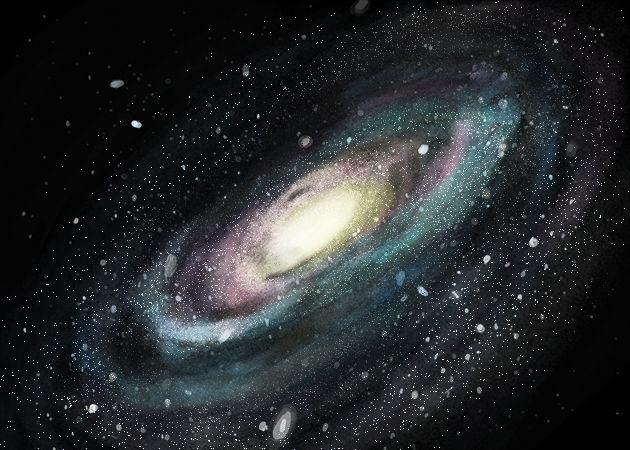A team of astronomers, including two from A&M, discovered a massive inactive galaxy more than 12 billion years old.
Formed about 1.5 billion years after the Big Bang, a unique galaxy named ZF-COSMOS-20115 has led many astronomers to rethink their previous theories on how galaxies like the Milky Way formed. To study galaxies, astronomers look through telescopes and use light spectrums to measure characteristics such as distance, age and size of galaxies. The group of astronomers who made this discovery accomplished it by using the two telescopes at the W.M. Keck Observatory in Hawaii.
Since light from distant objects takes years to reach Earth, scientists are able to look through telescopes and see what these objects looked like when they were much younger. Kim-Vy Tran, professor of physics and astronomy and one of the astronomers who helped make the discovery, said using telescopes and light coming from other galaxies allows them to look at objects that existed long ago.
“It’s kind of like if you wanted to look in the dark you would use special [night vision] goggles,” Tran said. “So we essentially used a special type of instrument that allowed us to look at different wavelengths that were particularly good for trying to find things in the distant universe.”
This discovery is significant because it may help confirm or deny theories about the formation of galaxies. Physics and astronomy professor Casey Papovich was one of the astronomers who helped make this discovery, and said this galaxy is different because all the galaxies around it are rapidly producing stars. This particular massive galaxy formed and died very quickly and is bigger than our own galaxy, the Milky Way.
“It tells us what we didn’t know, which is that galaxies can form much faster than we thought,” Papovich said. “No one had seen or expected galaxies like this to have formed so many stars in the universe then just shut off. So I think the next mystery is, ‘Why did this happen?’”
Professor of physics and astronomy Nicholas Suntzeff said as the universe continues to evolve, telescopes offer the opportunity to see different stages of this evolution.
“A telescope is like a time machine,” Suntzeff said. “As we look farther back in the universe we see objects earlier in their age because it takes light some amount of time for the light from the galaxy to get to us.”
Tran said the discovery of this dead galaxy was surprising because one would not expect such an old galaxy to be surrounded by younger galaxies.
“You don’t expect to see [dead galaxies] when the universe is so young, along the lines of how you wouldn’t expect to see a retired person in a kindergarten,” Tran said.
Suntzeff said science starts with astronomers and scientists challenging concepts and looking for new ways to describe observations, and he is proud of the research done by A&M faculty.
“We have among the best astronomers in the world working on this project,” Suntzeff said. “I’m very proud for Texas A&M University to have astronomers of that quality, but it doesn’t surprise me a discovery like this would come out of A&M.”
2 A&M astronomers helped team discover dead galaxy
April 18, 2017
Photo by Graphic by Sarah Bannon
A team of astronomers discovered the existence of a dead galaxy more than 12 billion years old.
0
Donate to The Battalion
$2065
$5000
Contributed
Our Goal
Your donation will support the student journalists of Texas A&M University - College Station. Your contribution will allow us to purchase equipment and cover our annual website hosting costs, in addition to paying freelance staffers for their work, travel costs for coverage and more!
More to Discover










